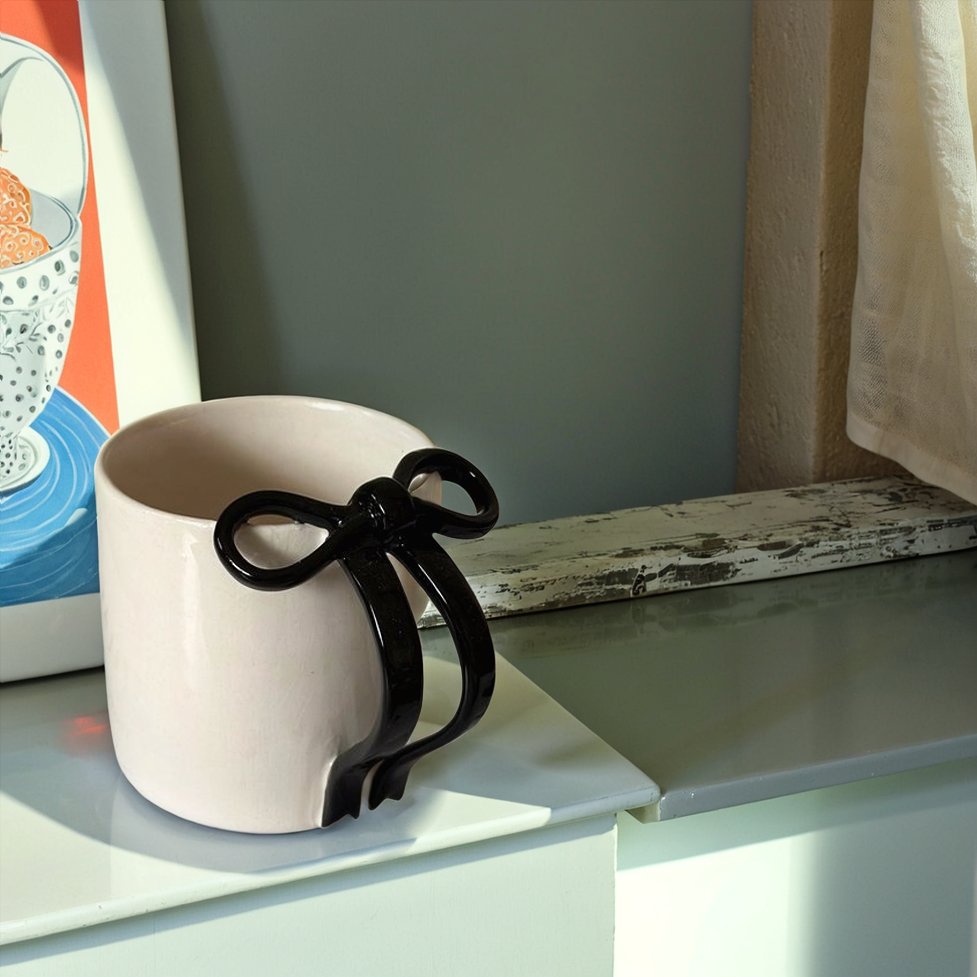High-quality product images play a vital role in ecommerce success. They grab attention, build trust, and drive sales. In fact, 75% of online shoppers rely on product photos when deciding what to buy. Products with professional photos see a 33% higher conversion rate, while multiple angles can boost sales by 58%. The good news? Photographing products doesn’t require a professional photographer or expensive gear. With the right tools and a bit of creativity, anyone can create high-quality images that make their products shine.


Why high-quality product images are essential for e-commerce
The role of visuals in influencing customer decisions
Visuals are often the first thing customers notice when browsing online stores. High-quality product images allow shoppers to visualize items better, creating a virtual experience that mimics in-person shopping. This is crucial for building confidence in a purchase. Studies show that 85% of consumers are more likely to buy a product after seeing a high-quality image. Additionally, 79% of shoppers say user-generated content (UGC), such as photos and videos, significantly impacts their buying decisions. Whether it’s a sleek gadget or a cozy sweater, professional-quality product photos help customers imagine the product in their lives, making them more likely to click “Add to Cart.”
Building trust and credibility with professional-looking photos
Trust is a cornerstone of ecommerce success, and high-quality images play a big role in establishing it. When product photography looks polished and professional, it signals to customers that the brand is reliable and cares about quality. In fact, 46.1% of web users judge a company’s credibility based on its website design, which includes product images. Clear, detailed photos reduce uncertainty by accurately representing the product, which can also lower return rates. By meeting product image requirements, businesses can create a seamless shopping experience that keeps customers coming back.
How ecommerce photography impacts sales and marketing success
Ecommerce photography is more than just a visual asset—it’s a powerful marketing tool. High-quality images enhance user experience, showcase intricate details, and make products stand out in a crowded market. Up to 90% of online buyers consider photo quality critical when making a purchase. Moreover, 75% of shoppers rely on product photos to decide what to buy. Companies that invest in professional-looking photography for ecommerce often see higher conversion rates and faster revenue growth. By prioritizing high-quality images, businesses can boost sales and strengthen their brand presence.
Step-by-step guide to DIY product photography

Choosing the right location and natural lighting
The right location can make or break your product photography setup. Start by finding a space with plenty of natural light. A room with large windows or an outdoor area works well. Natural lighting is not only free but also easier to manipulate. For the best results, photograph your products during the “golden hour,” when the light is warm and flattering. Morning or late afternoon light can also enhance the quality of your product images.
Different times of the day affect how light interacts with your product. Experiment with these variations to see what works best. If natural light isn’t an option, position your product near a light source and use reflectors to soften shadows. This simple adjustment can help you create standout images without expensive equipment.
Pro Tip: Avoid direct sunlight, as it can create harsh shadows and overexposed areas. Instead, diffuse the light with a sheer curtain or white sheet for a softer effect.
Setting up a simple and professional background
A clean background keeps the focus on your product. White backdrops are a classic choice, especially since platforms like Amazon require them. They provide a consistent look and help products stand out. Studies show that listings with white backgrounds achieve a 12% higher click-through rate compared to non-compliant ones.
For a DIY approach, use foam boards, white poster paper, or even a smooth bedsheet. If you want to add personality, opt for solid-colored backdrops that complement your product. Textured surfaces like wood or marble can also enhance lifestyle shots. Keep the background wrinkle-free and well-lit to avoid distractions.
Quick Tip: Standardized backgrounds not only improve visual appeal but also provide size cues, helping customers better understand the scale of your product.
Positioning your product for the best angles
Positioning plays a crucial role in creating high-quality images. Start by placing your product at eye level to mimic how customers would view it in person. Experiment with different angles to highlight unique features. For example, shoot from above for flat-lay images or from the side to showcase depth.
Focus on details that convey quality and craftsmanship. If you’re photographing products like jewelry or electronics, zoom in to capture intricate designs. Consistency is key—use the same angle and lighting for all your product images to maintain a professional look.
Did You Know? Eyewear brand Peepers increased conversions by 30% after improving their product photography. This shows how impactful proper positioning and lighting can be.
Using props to enhance product appeal
Props can transform a simple product photo into a story that resonates with customers. They add context, highlight features, and create a mood that makes the product more desirable. When used thoughtfully, props can elevate the perceived value of a product and make it stand out.
Here are some ways props enhance product photography:
- Create a narrative: Props help tell a story about the product. For example, a coffee mug placed next to a cozy blanket and a book suggests relaxation and comfort.
- Add visual interest: Props like flowers, utensils, or textured fabrics can break the monotony of plain backgrounds and make the image more engaging.
- Show scale and functionality: Including everyday items, like a pen next to a notebook, helps customers understand the product’s size and how it fits into their lives.
Props have been a staple in photography for centuries. In food photography, for instance, they’ve been used since the Renaissance to symbolize wealth and enhance the visual appeal of meals. Modern photographers continue this tradition, using props to illustrate cultural significance and production processes. A well-chosen prop can make a product feel luxurious, artisanal, or even nostalgic.
Pro Tip: Keep props simple and relevant. Overloading the frame can distract from the product. Always ensure the product remains the star of the image.
Achieving consistent composition and framing
Consistency in composition and framing is key to creating a professional and cohesive look across all product images. It ensures that your photos align with your brand identity and provide a seamless shopping experience for customers.
Start by choosing a focal point for each image. The product should always be the center of attention. Use the rule of thirds to position the product in a way that feels balanced and visually appealing. Most cameras and smartphones have gridlines to help with this.
Maintaining consistent angles is equally important. If you’re shooting multiple products, use the same height and distance for each shot. This creates a uniform look that’s pleasing to the eye. For flat-lay photography, ensure the camera is directly above the product to avoid distortion.
Quick Tip: Use masking tape to mark positions for your camera, tripod, and product. This helps replicate the setup for future shoots.
Framing also plays a big role in highlighting the product. Leave enough space around the item to avoid a cramped look. For lifestyle shots, include props or backgrounds that complement the product without overwhelming it. A consistent approach to composition and framing not only enhances the visual appeal but also builds trust with your audience.
How to edit product photos for a professional finish
Free and affordable photo editing tools for beginners
Editing product images doesn’t have to break the bank. Plenty of free and affordable tools can help beginners achieve professional results. Apps like Canva and Snapseed offer user-friendly interfaces and essential editing features, making them perfect for ecommerce photography. Canva allows users to remove backgrounds, adjust brightness, and enhance colors with just a few clicks. Snapseed, on the other hand, provides advanced tools like selective adjustments and healing brushes to refine product images.
For those looking for more robust options, Adobe Lightroom offers a mobile version that’s both affordable and packed with features. It’s ideal for optimizing image quality and creating consistent edits across multiple photos. GIMP, a free desktop software, is another great choice for those who want to dive deeper into editing techniques.
Pro Tip: Start with tools that match your skill level. As you grow more confident, explore advanced features to take your product photography to the next level.
Basic editing techniques to enhance product images
Simple editing techniques can make a huge difference in how product images look. Removing noise from photos enhances clarity and vibrance, ensuring they’re suitable for online use. Adjusting tone, brightness, and contrast adds depth, making products pop against their backgrounds. Enhancing colors ensures products look natural and corrects distortions caused by lighting during photographing products.
Cropping is another essential technique. It helps focus attention on the product while eliminating unnecessary distractions. For ecommerce photography, consistency is key. Apply the same edits across all images to create a cohesive look that aligns with your brand.
Quick Tip: Always preview your edits on different devices to ensure the images look great on both desktop and mobile screens.
Adjusting colors, brightness, and removing imperfections
Fine-tuning colors and brightness can transform product images into polished marketing assets. Color adjustments harmonize hues and ensure accurate representation, which enhances visual appeal. Brightness and exposure tweaks improve clarity and highlight key features, making products more attractive to potential buyers.
Removing imperfections, like dust spots or scratches, adds a layer of professionalism to your photos. Tools like Snapseed’s healing brush or Lightroom’s spot removal feature make this process simple. Clean, accurate images build trust and engagement, encouraging customers to click “Add to Cart.”
AI-powered editing tools have revolutionized this process. For example, Gugguu, a premium children’s fashion brand, uses AI to optimize image quality and showcase intricate details in real-time. In industries like electronics, AI captures features traditional photography struggles with, creating visually compelling presentations that elevate brand storytelling.
Did You Know? Removing unwanted background items not only enhances focus but also boosts clarity, making products stand out in crowded marketplaces.
Exporting images in the right format and resolution for ecommerce
Exporting product images in the correct format and resolution is essential for creating a professional online store. It ensures that images load quickly, look sharp, and meet platform requirements. Poorly optimized images can slow down websites and frustrate customers, so getting this step right is crucial.
Start by choosing the right file format. JPEG is the most common choice for ecommerce because it balances quality and file size. It works well for most products, especially those with lots of colors or details. For images with transparent backgrounds, like logos or products requiring layering, PNG is a better option. While PNG files are larger, they maintain transparency and sharpness. Avoid using formats like BMP or TIFF, as they create unnecessarily large files that can slow down your site.
Resolution also plays a big role in image optimization. Most ecommerce platforms recommend a resolution of 72 DPI (dots per inch) for web use. This ensures images look clear on screens without being too large. For dimensions, aim for at least 1000 pixels on the longest side. This size allows customers to zoom in and view details without compromising loading speed.
When exporting, use tools like Adobe Lightroom or Canva to edit product photos and adjust settings. These tools let users control file size, resolution, and compression levels. Always preview the exported image to ensure it looks great on both desktop and mobile devices. Consistent formatting across all images creates a polished and professional storefront.
Pro Tip: Save a backup of the original image before exporting. This way, you can re-edit or resize it later without losing quality.
Common mistakes to avoid in product photography for ecommerce
Overcomplicating the photoshoot setup
Keeping the product photography setup simple is key to achieving professional results. Many beginners make the mistake of overloading their setup with unnecessary equipment or props. This can lead to cluttered images that distract from the product itself. A clean, minimalistic approach works best. For instance, using a plain background ensures the product remains the focal point. Overcomplicating the setup often results in missed opportunities to highlight the product’s most important features. Instead, focus on stabilizing the camera, using proper lighting, and positioning the product effectively. These basics can make a significant difference in the quality of your product images.
Tip: Start with a simple setup and gradually add elements if needed. This helps maintain clarity and keeps the focus on the product.
Neglecting proper lighting techniques
Lighting can make or break a product photo. Poor lighting often leads to dull, shadowy, or overexposed images that fail to showcase the product’s details. Many DIY photographers rely solely on natural light without considering its limitations. While natural light is great, it’s not always consistent. Ignoring affordable lighting options, like ring lights or softboxes, can result in uneven shadows and poor image quality. Additionally, over-saturation or excessive noise reduction during editing can strip the image of its natural appearance, making it look unnatural. Proper lighting techniques ensure the product looks vibrant and appealing, which is crucial for ecommerce success.
Pro Tip: Experiment with different light sources and angles to find what works best for your product. Diffused lighting often produces the most flattering results.
Using distracting backgrounds or props
A cluttered background can take attention away from the product. Many beginners use busy or irrelevant props that confuse the viewer. This mistake can make the product appear less professional and harder to visualize in a customer’s life. Uniform shadows and consistent backgrounds help keep the focus on the product. For example, a white or solid-colored backdrop creates a clean, polished look. Props should enhance the product’s appeal, not overshadow it. Including too many elements in the frame can overwhelm the viewer and reduce the image’s effectiveness.
Quick Tip: Stick to one or two props that complement the product. Always ensure the background is clean and free of distractions.
Over-editing product photos and losing authenticity
Over-editing product images can do more harm than good. While editing tools are great for enhancing photos, going overboard can make products look unnatural and untrustworthy. Customers want to see authentic representations of what they’re buying. When images appear overly polished or unrealistic, it raises doubts about the product’s quality and the brand’s credibility.
Market research highlights this concern. A significant portion of consumers (71%) express hesitation about trusting AI-generated imagery. Nearly 83% believe such content should be labeled, and 70% prefer real, untouched models in advertising. These numbers show that authenticity matters. Over-editing, especially when it involves heavy retouching or AI-generated effects, can alienate potential buyers. It may even contribute to unrealistic beauty standards, as 43.7% of consumers worry about this issue.
To avoid these pitfalls, brands should aim for a balanced approach. Editing should enhance the product’s appeal without altering its true appearance. For example, adjusting brightness or removing minor imperfections is fine. However, changing the product’s color or adding artificial effects can mislead customers. This not only damages trust but also increases the likelihood of returns.
A simple product photography setup can help minimize the need for excessive editing. Proper lighting, clean backgrounds, and thoughtful composition ensure that the product looks its best straight out of the camera. When photographing products, focusing on authenticity during the shoot reduces the temptation to over-edit later. Customers appreciate honesty, and authentic images build stronger connections with them.
Tip: Always review edits with a critical eye. Ask, “Does this image still look like the real product?” If the answer is no, it’s time to scale back.
Leveraging AI tools for ecommerce photography
How WeShop AI E-Commerce Creative Studio simplifies product photography
The WeShop AI E-Commerce Creative Studio revolutionizes the process of photographing products by combining advanced technology with user-friendly features. This tool eliminates the need for expensive equipment or professional photographers, making it accessible to businesses of all sizes. It simplifies workflows and delivers stunning results in less time.


Here’s how the platform stands out:
| Feature | Description |
|---|---|
| Generate Unlimited Realistic Human Models | Offers over 200 models of different nationalities, ages, and genders to appeal to a broader audience. |
| Create Stunning Visuals with Diverse Backgrounds | Allows transformation of a single product image into multiple visuals with over 200 location templates. |
| Enhance Images with 4K Resolution | Uses high-speed GPU processing to upscale images while preserving natural details. |
| Efficient Background Removal | Simplifies background removal with fast and accurate AI tools, allowing for easy adjustments to align with branding. |
| Cost-Effective Solution | Provides a cheaper alternative to traditional photography, with a lifetime deal for all features at a one-time payment. |
| Time-Saving Efficiency | Reduces time spent on editing and background removal, allowing focus on other business aspects. |
| Consistency Across Visuals | Ensures a cohesive look by using the same models across visuals and maintaining a unified visual identity. |
By automating repetitive tasks like background removal and image enhancement, the platform allows users to focus on creativity and branding. This makes ecommerce photography faster, easier, and more cost-effective.
Using AI to create realistic model effects and virtual try-ons
AI technology has transformed how customers interact with product images. The WeShop AI E-Commerce Creative Studio uses intelligent recognition to create realistic model effects and virtual try-ons. This feature eliminates the need for hiring models or conducting elaborate photoshoots.

- Virtual try-ons have boosted sales by nearly 30%, as customers can visualize products before purchasing.
- Brands like AVON reported a 33% increase in Average Order Value (AOV) due to virtual try-on features.
- AI enhances customer engagement by suggesting complementary products and creating accurate digital avatars for better fit assessment.
These tools improve the shopping experience by helping customers see how products fit into their lives. Whether it’s clothing, accessories, or cosmetics, virtual try-ons make products more relatable and desirable.
Enhancing product images with AI-powered editing tools
AI-powered editing tools take product photography to the next level. The WeShop AI E-Commerce Creative Studio offers features like 4K resolution enhancement and precise background removal. These tools ensure product images look sharp, clean, and professional.
For example, the platform’s high-speed GPU processing upscales images without losing detail. This is especially useful for ecommerce platforms where clarity and quality are essential. Additionally, the background removal tool allows users to align visuals with their brand identity effortlessly. By maintaining consistency across all images, businesses can create a cohesive and polished storefront.
AI editing tools save time and reduce costs while delivering exceptional results. They empower businesses to produce high-quality visuals that attract customers and drive sales.
Optimizing images for social media and online stores with AI
Optimizing product images for social media and online stores is essential for grabbing attention and driving sales. Each platform has unique requirements, and AI tools like the WeShop AI E-Commerce Creative Studio make it easier to meet them. By tailoring visuals to specific platforms, businesses can ensure their products look stunning and professional everywhere.
Adapting Images for Social Media Platforms
Social media platforms like Instagram, Facebook, and Pinterest thrive on visuals. Each has its own image size and aspect ratio requirements. For example:
- Instagram: Square images (1080×1080 pixels) work best for posts, while vertical images (1080×1920 pixels) suit Stories.
- Pinterest: Vertical images with a 2:3 ratio (1000×1500 pixels) perform well.
- Facebook: Horizontal images (1200×630 pixels) are ideal for posts and ads.
AI tools simplify resizing and cropping by automating these adjustments. They also enhance image quality, ensuring sharp and vibrant visuals that stand out in crowded feeds.
Optimizing for Online Stores
Ecommerce platforms like Amazon and Shopify have strict image guidelines. High-resolution images with clean backgrounds and proper lighting are non-negotiable. AI-powered tools streamline this process by removing backgrounds, enhancing clarity, and maintaining consistent formatting. They also allow batch processing, saving time when photographing products in bulk.
Pro Tip: Use AI to create multiple variations of a single image. This helps test which visuals perform best on different platforms, boosting engagement and conversions.
By leveraging AI, businesses can elevate their ecommerce photography game. Optimized images not only attract more clicks but also build trust and credibility with customers.
Creating high-quality product images doesn’t have to be complicated or expensive. With the right tools and techniques, anyone can master product photography and produce high-quality images that captivate customers. Photographing products at home becomes simple when creativity and accessible resources come together. Tools like the WeShop AI E-Commerce Creative Studio make it even easier to elevate product images to a professional level. Start experimenting today and turn your product photography into a powerful tool for boosting sales and building trust.
FAQ
What is the best way to start with product photography at home?
Start with natural light and a simple setup. Use a smartphone or budget-friendly camera, a clean background, and a tripod for stability. Experiment with angles and lighting to find what works best for your product.
Do I need expensive equipment for professional-looking photos?
No, you don’t. Affordable tools like ring lights, foam boards, and smartphone cameras can deliver excellent results. Focus on lighting, composition, and editing to create high-quality images without breaking the bank.
How can I make my product photos stand out?
Use props to tell a story, maintain consistent composition, and ensure proper lighting. Editing tools can enhance colors and remove imperfections. Keep the background clean and distraction-free to highlight the product.
What are the common mistakes to avoid in product photography?
Avoid cluttered backgrounds, poor lighting, and over-editing. Keep the setup simple and ensure the product remains the focus. Always check for consistency in angles and framing across all images.
Can AI tools really improve my product photography?
Yes, AI tools like the WeShop AI E-Commerce Creative Studio simplify tasks like background removal, image enhancement, and creating virtual try-ons. They save time, reduce costs, and help produce professional-quality visuals effortlessly.


